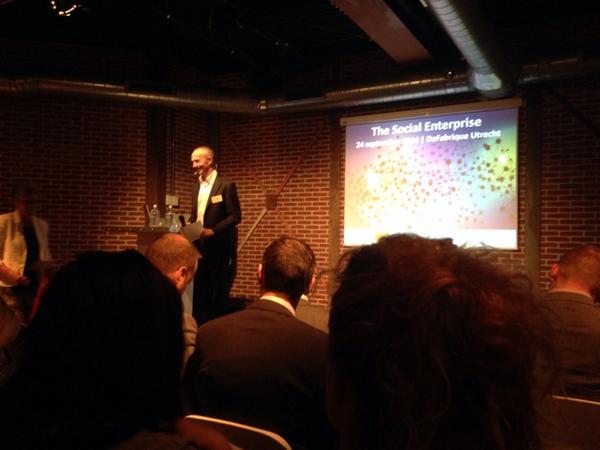
Some weeks ago I was interviewed as the chairman for the Social Enterprise Congress 2015.
Tips from a social business pioneer
Pitfalls for organizations that have an internal social platform
How do you prevent an internal social platform from fading away after an enthusiastic start? And how do you get everybody involved? Legitimate questions that many organizations with an internal social platform have to struggle with. “The road to a successful platform is often underestimated,” says social business pioneer Wim de Gier. De Gier, who, in 2010, became responsible for the worldwide implementation and go-live of social tools within LeasePlan – gladly shares the insights he has gained in recent years as Global Project Manager at LeasePlan. Resistance, lack of knowledge and control are, in his eyes, the biggest pitfalls: “Without proper care, attention and maintenance an internal social platform will never reach its full potential.”
Resistance to change Fear of something new is understandable. Not everyone is enthusiastic about the latest technology. Cultural differences play a role: “It is often thought that The Netherlands is ahead in terms of this kind of business, but at some other LeasePlan entities the adaptation process, has gone much faster.” The Dutch mentality “Just act normal ‘, results in people being less open to an internal online platform, according to the Global Project Manager. Also generational differences may provide resistance, “A young organization will want to work sooner with new techniques. They are accustomed to technical developments. Older generations see it as a “fad” and feel ‘forced’ to go along with the social movement in their field. “According to de Gier, an internal social platform is still too often compared to Facebook by management. The fear is that everyone will be sitting down to chat on the platform all day as opposed to working.
Facilitating rather than directing How do you ensure that people are open to the possibilities of an internal social platform? “My passion is to connect people,” de Gier. “I want all my efforts – both personally and professionally – to make a positive contribution to the world. I strive for a global culture and behaviour with open communication and transparency, within my field. All the energy that you put into an internal social platform pays off in liberty.” A platform is the only way to establish the connection, according to the Global Project Manager. In order to move people and to convince them, you have to be in charge of the interaction yourself. First, let employees experience through you what online sharing and connecting provides to them. Think of less travel time and fewer emails in your inbox. Set a good example, take care of internal training and share success stories. Then people see how the system can work for them. It is about how you deal with the resistance: stop facilitating and start directing.”
Lack or loss of knowledge within your organization A great advantage of an internal social platform is that it eliminates the need to reinvent the wheel. You are aware of and obtain knowledge from projects run by other departments or that have already been implemented. But what if IT managers are not trained and as a result don’t make any technical update to the platform? Or what happens if the drivers behind the internal platform – the social ambassadors – leave the organisation? De Gier has seen it happen in both cases: “Because of the lack or loss of knowledge you need to reinvent the wheel completely again and this is a shame! Therefore always make sure that your IT department is in place, and put permanent ambassadors in place to keep the platform alive. If things go wrong on the front-end, the back-end doesn’t work either: success does not come easily. ”
Guidance and strength from the top of the company Social Ambassadors may, according to De Gier, do a lot of work and accomplish much. “But if the top of your company does not embrace the internal social platform, then it is a matter of time before the internal focus shifts to other issues.” Ensuring that you have the Board of Directors and the top management active on the platform is a challenging task. “Both generational and cultural differences as well as lack of knowledge are involved.” In the workplace, it is normal to share personal interests with colleagues, help each other out and share knowledge.”Investigate the professional needs and personal interests. By showing appealing examples to the management, they will be open up to opportunities faster. Take care of trainings, send monthly reports and let all the communication go through the platform. By acting in this way you create resources to make your internal social platform a success! ”
On Tuesday, June 16th, 2015, Wim de Gier will be chairman at the conference The Social Enterprise in Maarssen. Want to know more about how you can turn an internal social platform into a success? Sign up directly, or visit the website for details of the conference The Social Enterprise. Access to the conference is free.
